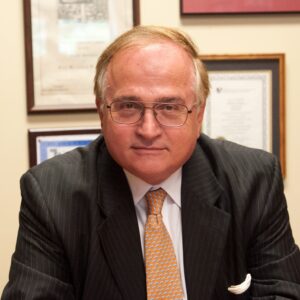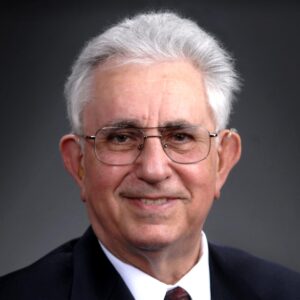The connection between research and real life is never so direct—or crucial—as it is in the field of health care, where advancements, and the deployment of those advancements, can determine the wellbeing of so many. And there is perhaps no better example of this reality than in the study and engineering of drug delivery methods.
The field of drug delivery encompasses a wide variety of approaches, technologies and systems for transporting a pharmaceutical compound through the body to treat and manage health issues. Broadly speaking, the field includes everything from pills to pumps and protein engineering to antibody delivery.
While the last five decades have seen remarkable progress, there is still more to be done to make the delivery of medications more efficient, effective, painless and affordable. One life-changing breakthrough at a time, a cadre of visionary Texas Engineers have become global leaders in this pursuit. They are driven by both personal and professional motivation, and it is their belief that, through advancements in drug delivery, we can transform patients’ daily lives and even extend the window of treatment long enough to change a prognosis. These are their stories.
A Moment That Changed Everything

In everyone’s life, there are a few moments that serve as reminders of how things can drastically change in an instant. For Nicholas Peppas — a renowned inventor and expert in oral drug delivery — one of those moments came when he was diagnosed with multiple sclerosis (MS) in 1992. Over 2 million people around the world have MS, with symptoms that include blurred vision, loss of balance, poor coordination, slurred speech, paralysis, extreme fatigue, blindness and more.
The diagnosis changed his life and shaped the course of his research.
His physician quickly prescribed a common drug for MS, called interferon-beta, which is aimed at keeping symptoms at bay. The drug came in the form of a weekly intramuscular injection, a type of injection where the needle must push into muscles to release the medicine.
“As a patient, I remember feeling that the day after the injection was just terrible,” said Peppas, a professor in the Department of Biomedical Engineering and McKetta Department of Chemical Engineering with appointments in the university’s Dell Medical School and College of Pharmacy. “My wife had to administer the injections. I had pains in my bones, pains in the injection area. That’s when I decided to take my oral-drug delivery platform and develop it for MS.”
Though Peppas was told years later that he had shockingly been misdiagnosed (12 years later he learned he had an autoimmune disease with the same symptoms that could be managed much more easily and without shots), he and his team never wavered in their efforts to develop a better treatment delivery platform for MS. They developed a new, less invasive method, a capsule, which has not yet made it to market but has informed many other oral delivery platforms in labs around the world.
We need to improve the quality of life of our patients and injections are not always the best solution.”
Often described by his colleagues with words such as pioneer, pacesetter and iconic, Peppas continues to make incredible leaps in the oral drug delivery and controlled-release drug delivery arena. Last year, he and his former graduate student, Serena Horava, announced a breakthrough for hemophilia B that enables a treatment to be administered via a biodegradable capsule.
“My most pressing concern was the treatment of younger patients who suffer from hemophilia and who have to apply injections every two days,” Peppas said. “The original idea of the project was conceived when Dr. Lisa Brannon-Peppas, who at the time was a biomedical engineering faculty member, discussed with me the side effects of the disease and the psychological impact it has on mothers.”
Peppas’ lab, along with his new Institute for Biomaterials, Drug Delivery and Regenerative Medicine at UT Austin, is also working on new types of carriers (biopolymers, biomaterials) to better target specific areas of the body. His lab is also focused on siRNAs (small interfering RNA) that were recently discovered to regulate the expression of genes. This work is centered on finding ways to deploy siRNAs in the treatment of autoimmune diseases such as MS, Crohn’s disease and various bowel syndromes.
“I think in the next 10 to 15 years, we are going to see less expensive systems and new systems for the treatment of diseases such as cancer, autoimmune diseases and cardiovascular diseases,” Peppas said. “We need to improve the quality of life of our patients, and injections are not always the best solution.”
Rethinking Chemotherapy
 When her sister was diagnosed with Hodgkin’s Lymphoma — a cancer that starts in the white blood cells — Jeanne Stachowiak was already working in drug delivery as a biomedical engineer. Still, seeing that chemo process firsthand gave Stachowiak a new perspective.
When her sister was diagnosed with Hodgkin’s Lymphoma — a cancer that starts in the white blood cells — Jeanne Stachowiak was already working in drug delivery as a biomedical engineer. Still, seeing that chemo process firsthand gave Stachowiak a new perspective.
“Going to chemo treatment with my sister brought a level of realism that I don’t think I would have otherwise experienced,” said Stachowiak, an assistant professor in the Department of Biomedical Engineering. “As researchers, we work with Doxorubicin, the most successful chemotherapeutic drug ever. But when we work with it in the lab, we have tiny quantities and make up small volumes of concentrated solutions. I remember watching a nurse bring a big red bag of it into the room and pump it right into my sister’s veins during treatment. I had no idea just how significant the dosing is and how weak people can get from it.”
Even for a patient with a positive prognosis and a cancer with a high survival rate, chemotherapy is debilitating. Hoping to solve that problem, Stachowiak and her graduate student Avinash Gadok drilled down to the cellular level to find a faster route to deliver chemotherapy directly to individual cells. They set their sights on a part of the cell called a gap junction, which is the body’s natural mechanism for sharing molecules between neighboring cells.
“There must be a way to utilize gap junctions for better drug delivery,” Stachowiak said. “The big challenge is in making the materials efficiently and showing that the drugs are delivered through the gap junctions and not some other component.”
Going to chemo treatment with my sister brought a level of realism that I don’t think I would have otherwise experienced.”
To use this pathway, the researchers developed “connectosomes,” a new type of nanoparticle, derived from donor cells, that are equipped with gap junctions. Their new method, which in cell-level studies led to a significant decrease in the dose required to kill a cancer cell, enabled them to deliver the chemo more directly than ever before.
The researchers are now working on a second study advancing “connectosomes” by making them much smaller and adding antibody fragments in order to target them to breast cancer cells. Stachowiak said the “connectosomes” have demonstrated an ability to distinguish between cells on the basis of receptors that they express on their surfaces, which often serve as key markers of health and disease.
“We think we can reduce the chemo doses even further by targeting the particle and hopefully get to a dose that’s not going to be toxic for the bystander cells in the tissue,” she said.
Giving Control Back to Patients
 For those searching for what’s next in drug delivery, look no further than Jennifer Maynard’s lab. Inside, almost two dozen students are focused on protein engineering and antibody delivery. For the past five years, Maynard has worked with chemical engineering professors Keith Johnston and Tom Truskett on ways to deliver proteins, which are the basis of many immunizations and treatments for those with cancer and autoimmune diseases.
For those searching for what’s next in drug delivery, look no further than Jennifer Maynard’s lab. Inside, almost two dozen students are focused on protein engineering and antibody delivery. For the past five years, Maynard has worked with chemical engineering professors Keith Johnston and Tom Truskett on ways to deliver proteins, which are the basis of many immunizations and treatments for those with cancer and autoimmune diseases.
The challenge is that proteins at high concentrations can become unstable and fold onto each other, becoming viscous, like honey. As a result, the process of delivering proteins, largely through infusions, is extremely taxing on patients. That is why research efforts in this area typically focus on stabilizing concentrations of proteins so that a small volume of proteins can be delivered more easily.
I like the idea of taking something that killed people and using it to actually help and treat people, through a vaccine.”
Patients typically receive an infusion every week or two weeks at a medical center, where the protein is diluted in a large volume to help with its stability. During treatment, health care professionals are monitoring patients for a possible allergic reaction.
“Because of this inconvenience, there’s a lot of focus on developing methods to deliver antibodies that patients can deliver themselves, like an insulin shot,” said Maynard, an associate professor in the McKetta Department of Chemical Engineering.
Maynard and her colleagues have engineered a formulation of proteins that is stable enough to be delivered through an injection. The technology is currently being tested in mice.
In a completely different project, Maynard has turned her attention to the bacteria that led to the Black Death, one of the most devastating pandemics in the world’s history, resulting in 75 million to 200 million deaths. Maynard and her team hope to utilize the pathogen responsible — the Yersinia pestis bacterium — and specifically a hearty protein found in the bacteria for drug delivery.
They believe that the bacteria could be used best to treat diseases such as cholera, which is caused by the ingestion of bacteria in contaminated water or food and other causes of gut distress.
“Bacteria are the original drug delivery specialists,” Maynard said. “The black plague was so effective at wiping out humanity. I like the idea of taking something that killed people and using it to actually help and treat people, through a vaccine.”
It’s All About People
 Adam Heller finds that the best way to approach a problem is to think about those affected by it.
Adam Heller finds that the best way to approach a problem is to think about those affected by it.
“Before I even think about a solution, I ask the question ‘To whom does it make a difference and why?” said Heller, a research professor in the McKetta Department of Chemical Engineering and the recipient of the 2007 National Medal of Technology and Innovation. “That is always my first question, not whether it is in the scope of my expertise.”
That approach has helped turn Heller into one of the most prolific inventors on the UT Austin campus. He has been a co-inventor or inventor of 271 patents granted by the U.S. Patent and Trademark Office and is co-inventor or inventor of 393 total U.S. patent applications. Of these, more than 200 were or are in use.
Heller has helped pave the way for the commercialization and entrepreneurial culture that now permeates the Cockrell School. He is perhaps best known for creating the first painless glucose-monitoring system and the sensing element of the world’s first bloodless, continuous glucose-monitoring system.
The ideas for the systems came from his son. “He came to me with the idea and said, ‘Can we measure glucose in a way that doesn’t hurt people?’ So we set out to make the measurement of glucose simple, quick and painless,” Heller said.
Their technology, which could measure glucose with eight times less blood than what is drawn by a mosquito, changed the lives of millions of diabetics worldwide.
Before I even think about a solution, I ask the question ‘To whom does it make a difference and why?”
In 1996, the father-son team co-founded TheraSense to bring the painless glucose-monitoring device and the continuous glucose-monitoring device to market. That company was eventually sold to Abbott Diabetes Care Inc., which now produces billions of units of the devices, known as the FreeStyle systems, every year.
In the last few years, Abbott began producing the FreeStyle Libre system, which is the first continuous glucose monitoring system that is completely bloodless. The core of the sensor technology of FreeStyle Libre, which Heller created, provides for the electrical connection of oxidation and reduction in reaction-accelerating enzymes to electronic circuits, for which he coined the term “electrical wiring of enzymes,” now commonly used around the world.
Now in his mid-80s, Heller hasn’t stopped innovating. With his son, Ephraim, along with his colleagues, he has engineered a micropump that continuously delivers into the mouth a drug used to treat Parkinson’s. The unobtrusive device fits into the cheek and is held by a tooth-anchored orthodontic retainer following the contours of the palate. It is the basis for a new venture, synAgile Corporation, developing the continuous oral drug-infusion systems. SynAgile presently focuses on DopaFuse™, its continuous oral Levodopa-Carbidopa delivery system for patients with advanced Parkinson’s disease.
Heller will tell you that much of his professional drive comes from his experiences with his family in the Holocaust and the suffering of his misdiagnosed daughter who died at the age of 24. As a young boy, he was incarcerated in the Kolozsvar Ghetto in Hungary, then in the Bergen-Belsen concentration camp in Germany. He and his immediate family survived on Kasztner’s train. This experience, along with the suffering of his daughter, profoundly impacted the work that he, his wife and his two sons have pursued.
“My family is truly committed to helping people,” Heller said. “We have a drive to give back. I owe it as long as I can work.”